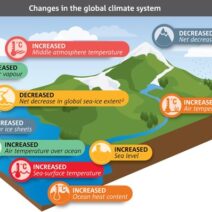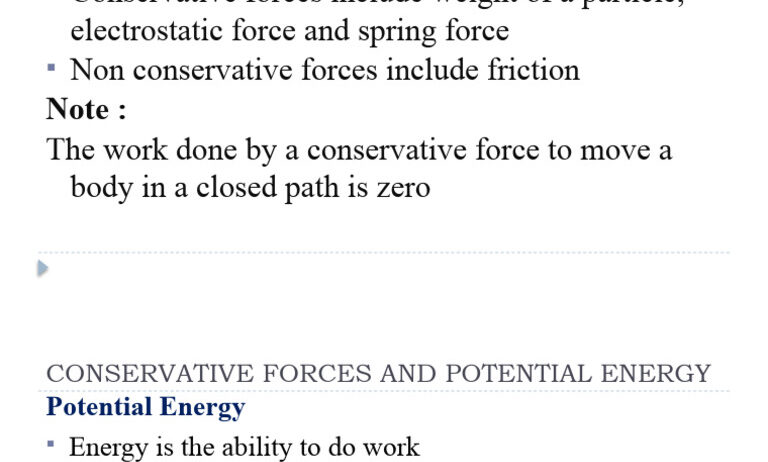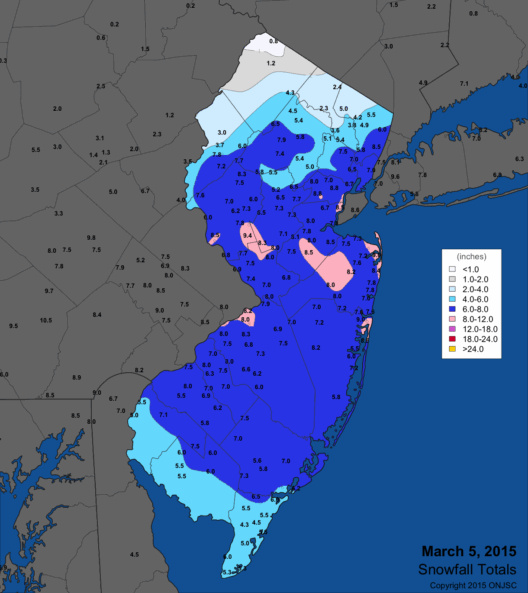Potential energy is a fascinating concept that has intrigued scientists and philosophers alike since the dawn of physics. At its core, it is energy that is stored within an object, contingent upon its position or configuration relative to other objects. Potential energy can be likened to a tightly coiled spring—at rest, it holds the promise of kinetic energy, waiting to be unleashed. Thus, one might ponder: is potential energy exclusively confined to conservative forces, or does it extend its reach into realms beyond? To navigate this inquiry, we must first elucidate the nature of conservative forces.
Conservative forces are those that conserve mechanical energy within a closed system. Examples include gravitational force and elastic spring force. When an object is elevated against the force of gravity, it accumulates gravitational potential energy, which can be fully recovered if the object is allowed to fall back to its original position. Similarly, a compressed spring holds potential energy, released when the spring returns to its equilibrium state. In these cases, the work done against these forces is completely recoverable, showcasing the hallmark of conservative forces.
Yet, the landscape of energy is not solely inhabited by conservative forces. To illustrate this, consider the metaphor of a turbulent river. While the steady flow of water represents conservative forces moving effortlessly, the rapids symbolize non-conservative forces that can alter the path of energy in unpredictable ways. Non-conservative forces, such as friction and air resistance, dissipate energy into the environment, often in the form of heat. Herein lies a critical distinction: potential energy associated with non-conservative forces cannot be entirely recuperated.
Take, for instance, the phenomenon of friction—an insidious force that resists motion. When an object slides across a rough surface, some of its kinetic energy transforms into thermal energy, heating the surfaces in contact. Through this lens, one realizes that while potential energy may exist momentarily in the system, it is not strictly a result of conservative forces. The energy is transformed rather than conserved, raising the question of whether potential energy can be encapsulated in more complex concepts.
The appeal of potential energy extends beyond the confines of classical mechanics and conservative forces. In the realm of electrical phenomena, one encounters electrostatic potential energy, a form of potential energy arising from the position of charged particles in an electric field. This energy can be influenced by both conservative and non-conservative factors. For instance, in circuits, resistance opposes the flow of current, converting electrical potential energy into thermal energy. However, in an ideal circuit devoid of resistance, the energy can be conserved and transformed into other forms without loss. Here, the dual nature of potential energy re-emerges, demonstrating its independence from conservative forces.
Another intriguing example of potential energy can be found in molecular systems, where chemical potential energy plays a pivotal role. The energy stored in the bonds between atoms can be released in reactions, producing energy that is harnessed in processes such as combustion. While these reactions often involve both conservative and non-conservative interactions, the potential energy derived from molecular bonds is not tethered solely to conservative forces. Instead, it reflects a complex interplay of forces and energy transformations that extend beyond the traditional confines of physics.
The inseparability of potential energy from non-conservative forces illustrates the dynamic nature of energy itself. Energy is not merely about position; it also pertains to the intricate interactions that govern the movement and behavior of objects. To confine potential energy exclusively to conservative forces is akin to suggesting that the ocean’s waves can be understood without acknowledging the wind that powers them.
Moreover, the exploration of potential energy is not limited to the classical paradigms of physics. In modern physics, particularly in quantum mechanics, potential energy manifests in unique and profound ways. Quantum potential energy arises from the probabilistic nature of particles, governed by wave functions that describe where a particle may be found. This quantum potential energy transcends traditional notions of conservative forces, presenting a new frontier where energy assumes a more abstract form—a dance between particles that defies conventional understanding.
The philosophical implications of potential energy, both classical and quantum, emphasize a broader narrative about the interconnectedness of forces and energy. Just as potential energy can be released and transformed, so too can our understanding of nature evolve. Recognizing that potential energy can arise in contexts beyond conservative forces invokes a more nuanced view of the universe, one that embraces change, interaction, and transformation as vital components of existence.
In conclusion, the notion that potential energy is exclusive to conservative forces does not hold firmly against scrutiny. While conservative forces provide a foundational understanding of potential energy, the reality is far more intricate. Potential energy can and does exist in conjunction with non-conservative forces, as seen in friction, electrical systems, and molecular interactions. Furthermore, the exploration of quantum potential energy opens yet another dimension of understanding, underscoring the complexity and beauty of energy in our universe. Thus, potential energy represents not merely a static concept but a dynamic interplay of forces that shape the world around us, resonating with the untamed rhythm of nature itself.








